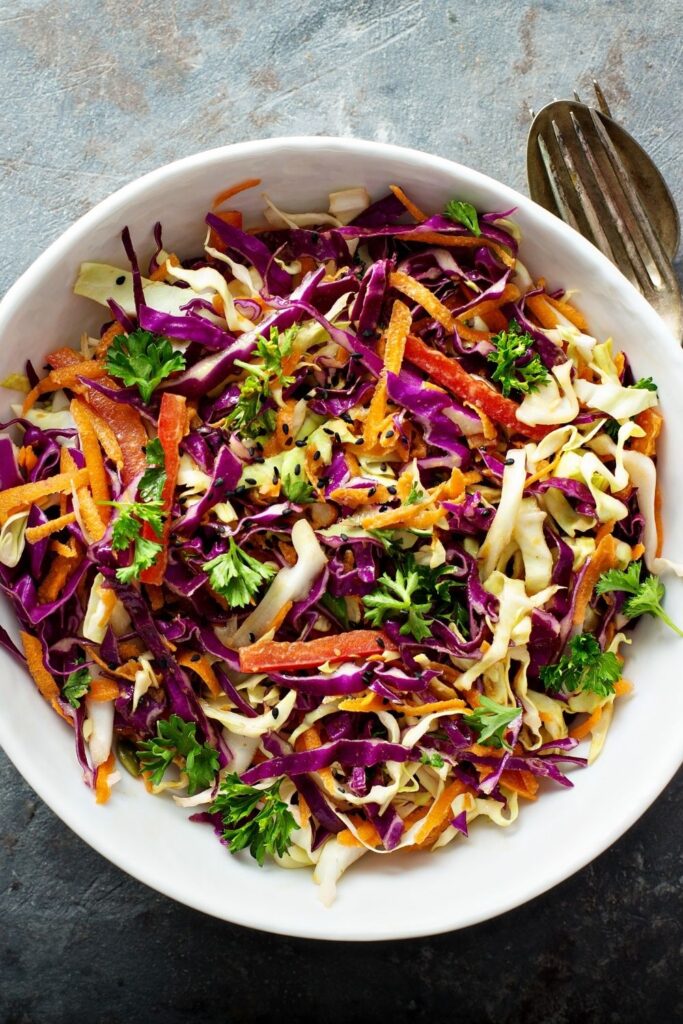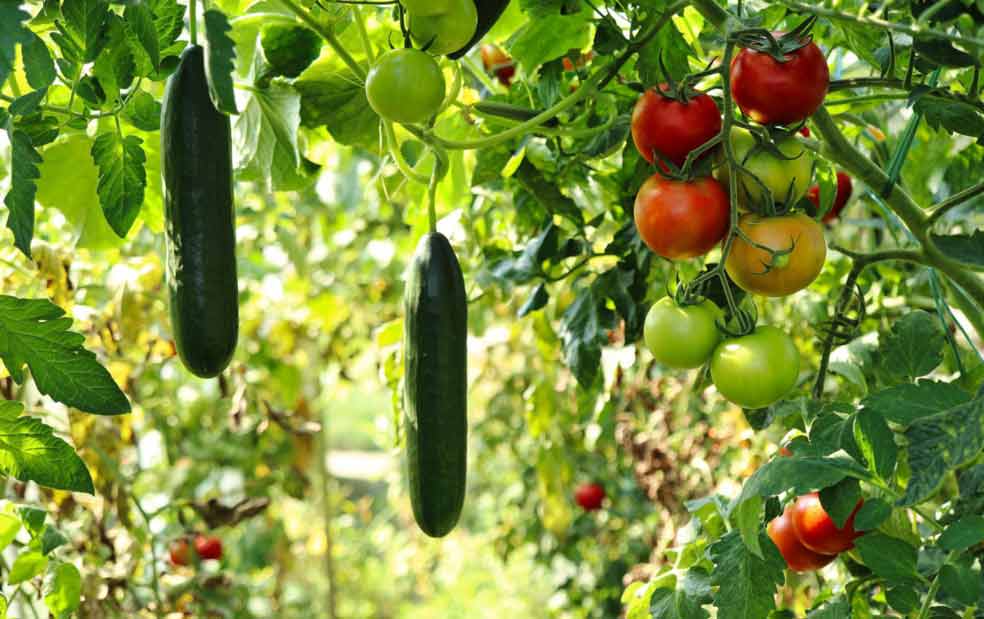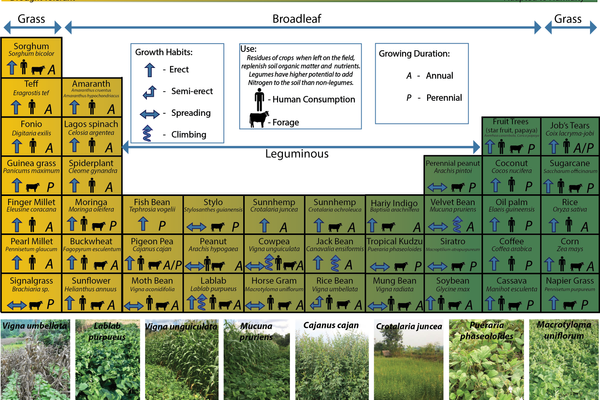The Ultimate Guide To Intercropping Vegetables: A Chart Of The Best Companions
Title: The Ultimate Guide to Intercropping Vegetables: A Chart of the Best Companions
Introduction:
Intercropping is a gardening technique that involves planting two or more crops in the same space. This can be done in a variety of ways, such as planting rows of different vegetables next to each other, or interspersing different plants throughout a single bed.
There are many benefits to intercropping, including:
- Increased yields: Intercropping can help to increase yields by taking advantage of different plants' differing growth rates and nutrient requirements. For example, you can plant fast-growing crops like radishes and lettuce in between slower-growing crops like tomatoes and peppers. By the time the tomatoes and peppers are fully mature, the radishes and lettuce will have already been harvested, freeing up space for the larger plants to grow.
- Reduced pest and disease pressure: Intercropping can help to reduce pest and disease pressure by attracting beneficial insects and discouraging pests. For example, planting marigolds near tomatoes can help to repel aphids and whiteflies.
- Improved soil health: Intercropping can help to improve soil health by providing a variety of different nutrients and organic matter. For example, legumes like beans and peas can fix nitrogen in the soil, which can benefit other plants.
Main Content:
Here are some of the best companion plants for different vegetables:
- Carrots: Plant carrots with radishes, onions, or lettuce. Radishes mature quickly and loosen the soil for the carrots, while onions and lettuce help to deter pests.
- Tomatoes: Plant tomatoes with basil, peppers, or marigolds. Basil helps to repel aphids and other pests, while peppers and marigolds also help to improve soil health.
- Peas: Plant peas with lettuce, carrots, or cabbage. Lettuce provides shade for the peas, while carrots and cabbage help to deter pests.

- Potatoes: Plant potatoes with beans, peas, or spinach. Beans and peas help to fix nitrogen in the soil, while spinach helps to deter pests.

- Cucumbers: Plant cucumbers with melons, squash, or tomatoes. Melons and squash help to shade the cucumbers, while tomatoes help to deter pests.

This is just a small sampling of the many different companion plants that can be used in intercropping. There are many resources available online and in libraries that can help you to find the best companion plants for your specific garden.
Conclusion:
Intercropping is a great way to increase yields, reduce pest pressure, and improve soil health in your garden. By planting different vegetables together, you can take advantage of their different strengths and weaknesses to create a more productive and sustainable garden.
Intercropping is a great way to improve your vegetable garden's productivity and health. By planting different vegetables together, you can help to attract beneficial insects, deter pests, and improve soil health.
If you're new to intercropping, or you're just looking for some inspiration, I recommend visiting Home Gardening. This website has a comprehensive intercropping vegetables chart that can help you to choose the right plants for your garden.
The chart includes information on which vegetables grow well together, which vegetables should be avoided planting together, and the benefits of intercropping. It also includes tips on how to space your plants and how to care for your intercropped garden.
So if you're ready to take your vegetable gardening to the next level, I encourage you to visit Home Gardening today.
FAQ of intercropping vegetables chart
- What is intercropping?
- Intercropping is a farming practice in which two or more crops are grown in the same field at the same time. This can be done in a variety of ways, such as by planting the crops in alternating rows, by mixing them together, or by planting them in a checkerboard pattern.
- What are the benefits of intercropping vegetables?
- There are many benefits to intercropping vegetables, including:
- Increased yields: Intercropping can often lead to increased yields of vegetables, as the different crops can benefit each other in a number of ways. For example, some crops can help to suppress weeds, while others can help to attract beneficial insects.
- Improved soil health: Intercropping can help to improve soil health by increasing the diversity of plants in the soil, which can lead to increased nutrient cycling and reduced erosion.
- Reduced pest and disease pressure: Intercropping can help to reduce pest and disease pressure by breaking up the pest's or disease's life cycle. For example, if one crop is susceptible to a particular pest, another crop that is not susceptible can be planted nearby to help to disrupt the pest's lifecycle.
- Increased biodiversity: Intercropping can help to increase biodiversity in the surrounding area, which can benefit both humans and wildlife.
- There are many benefits to intercropping vegetables, including:
- What are some good combinations of vegetables to intercrop?
- There are many different combinations of vegetables that can be intercropped, but some popular choices include:
- Beans and corn: Beans fix nitrogen in the soil, which can benefit corn. Corn provides shade for beans, which can help to prevent them from bolting.
- Cabbage and lettuce: Cabbage can help to suppress weeds, while lettuce provides shade for cabbage seedlings.
- Carrots and onions: Carrots and onions have different root systems, so they do not compete for resources.
- Peas and tomatoes: Peas fix nitrogen in the soil, which can benefit tomatoes. Tomatoes provide support for peas, which can help to prevent them from falling over.
- There are many different combinations of vegetables that can be intercropped, but some popular choices include:
- How do I choose the right crops to intercrop?
- When choosing crops to intercrop, it is important to consider the following factors:
- The growth habits of the crops: Some crops, such as tomatoes, grow tall and need plenty of space. Other crops, such as lettuce, grow low and can be planted closer together.
- The nutrient requirements of the crops: Some crops, such as beans, need a lot of nitrogen. Other crops, such as lettuce, do not need as much nitrogen.
- The pest and disease resistance of the crops: It is important to choose crops that are not susceptible to the same pests and diseases.
- The harvest times of the crops: It is important to choose crops that have different harvest times so that you can have a continuous supply of vegetables.
- When choosing crops to intercrop, it is important to consider the following factors:
- How do I plant intercropping vegetables?
- When planting intercropping vegetables, it is important to follow the specific instructions for each crop. However, some general tips include:
- Plant the crops at the same time.
- Plant the crops at the correct spacing.
- Water the crops regularly.
- Fertilize the crops as needed.
- Weed the crops regularly.
- When planting intercropping vegetables, it is important to follow the specific instructions for each crop. However, some general tips include:
- How do I manage intercropping vegetables?
- Once your intercropping vegetables are planted, you will need to manage them regularly. This includes tasks such as:
- Watering the crops
- Fertilizing the crops
- Weeding the crops
- Pest and disease control
- Harvesting the crops
- Once your intercropping vegetables are planted, you will need to manage them regularly. This includes tasks such as:
Image of intercropping vegetables chart
Intercropping chart for cool-season vegetables
 This chart shows some good combinations of cool-season vegetables to intercrop. For example, lettuce and spinach can be planted together because they have similar growing requirements. Bush beans can be planted with tomatoes because they help to keep the soil cool and prevent pests.
This chart shows some good combinations of cool-season vegetables to intercrop. For example, lettuce and spinach can be planted together because they have similar growing requirements. Bush beans can be planted with tomatoes because they help to keep the soil cool and prevent pests.Intercropping chart for warm-season vegetables
This chart shows some good combinations of warm-season vegetables to intercrop. For example, corn and beans can be planted together because they help each other to grow. Corn provides a support for the beans to climb, and the beans fix nitrogen in the soil, which benefits the corn.
Intercropping chart for herbs and flowers
 This chart shows some good combinations of herbs and flowers to intercrop. For example, basil and tomatoes can be planted together because they both benefit from the same growing conditions. Basil helps to deter pests from tomatoes, and tomatoes provide support for basil to climb.
This chart shows some good combinations of herbs and flowers to intercrop. For example, basil and tomatoes can be planted together because they both benefit from the same growing conditions. Basil helps to deter pests from tomatoes, and tomatoes provide support for basil to climb.Intercropping chart for vegetables and fruits
This chart shows some good combinations of vegetables and fruits to intercrop. For example, strawberries and lettuce can be planted together because they have different growing requirements. Strawberries need full sun, while lettuce can tolerate some shade.
Intercropping chart for vegetables and nitrogen-fixing plants
 This chart shows some good combinations of vegetables and nitrogen-fixing plants to intercrop. Nitrogen-fixing plants, such as beans and peas, add nitrogen to the soil, which benefits other plants.
This chart shows some good combinations of vegetables and nitrogen-fixing plants to intercrop. Nitrogen-fixing plants, such as beans and peas, add nitrogen to the soil, which benefits other plants.Intercropping chart for vegetables and insect-attracting plants
 This chart shows some good combinations of vegetables and insect-attracting plants. Insect-attracting plants, such as marigolds and nasturtiums, attract beneficial insects that help to control pests.
This chart shows some good combinations of vegetables and insect-attracting plants. Insect-attracting plants, such as marigolds and nasturtiums, attract beneficial insects that help to control pests.Intercropping chart for vegetables and pollinator-attracting plants
This chart shows some good combinations of vegetables and pollinator-attracting plants. Pollinator-attracting plants, such as sunflowers and lavender, attract bees and other pollinators that help to pollinate vegetables.
Intercropping chart for vegetables and cover crops
 This chart shows some good combinations of vegetables and cover crops. Cover crops, such as winter rye and clover, can be planted in the off-season to improve soil health and suppress weeds.
This chart shows some good combinations of vegetables and cover crops. Cover crops, such as winter rye and clover, can be planted in the off-season to improve soil health and suppress weeds.Intercropping chart for vegetables and companion plants
This chart shows some good combinations of vegetables and companion plants. Companion plants are plants that benefit each other when they are grown together. For example, carrots and onions can be planted together because they repel each other's pests.
Intercropping chart for vegetables and medicinal plants
 This chart shows some good combinations of vegetables and medicinal plants. Medicinal plants, such as chamomile and lavender, can be grown in your vegetable garden and used to make teas, tinctures, and other remedies.
This chart shows some good combinations of vegetables and medicinal plants. Medicinal plants, such as chamomile and lavender, can be grown in your vegetable garden and used to make teas, tinctures, and other remedies.

Post a Comment for "The Ultimate Guide To Intercropping Vegetables: A Chart Of The Best Companions"